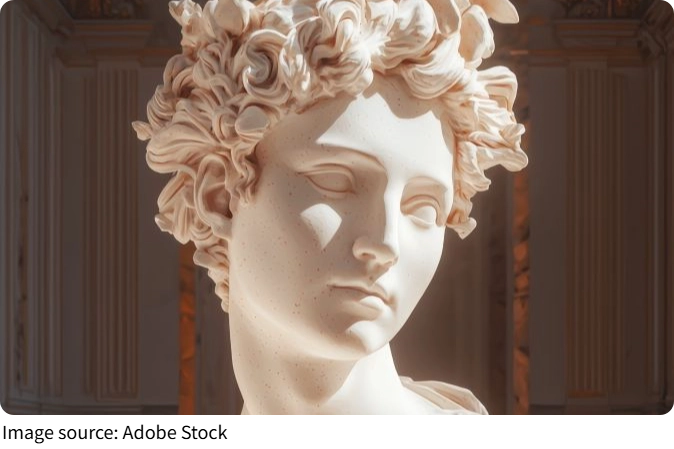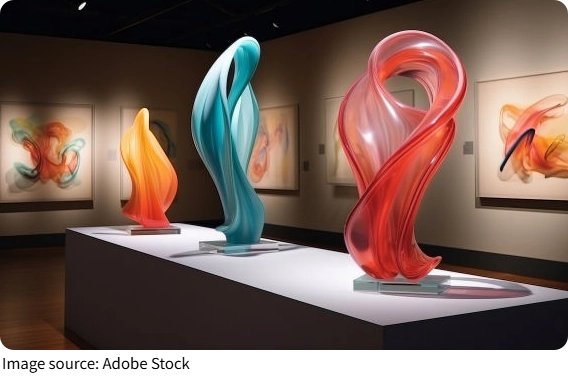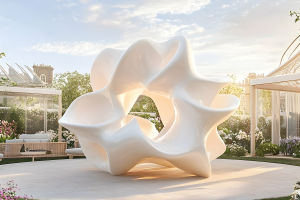Sculpture’s Evolution

Sculpture is one of humanity's oldest art forms, but have you ever stopped to consider how its materials and techniques have evolved? From rough stone carvings to high-tech 3D-printed masterpieces, sculpture has undergone remarkable transformations.
This article invites you to explore how innovations in materials and technology have shaped the way sculptors create and express their vision. What surprises might you discover about the evolution of this fascinating art?
The Beginnings: Stone, Wood, and Clay
In ancient times, artists used natural, readily available materials like stone, wood, and clay. Stone was prized for its durability and permanence, which is why many early sculptures have survived millennia. Wood allowed more detailed carving but was less lasting. Clay, on the other hand, offered flexibility and ease of shaping, often used for smaller statues or models. These materials defined the limits of sculptors' creativity, constrained by the tools and knowledge of the era.
Metal Enters the Scene
The discovery and use of metals like bronze marked a major breakthrough. Bronze casting allowed for more dynamic and complex forms that could not be carved easily. The lost-wax casting technique, developed thousands of years ago, enabled artists to create intricate details and larger sculptures with strength and finesse. This innovation expanded artistic possibilities and influenced cultures from ancient Greece to Asia.
Marble and Its Timeless Appeal
Marble became a symbol of elegance and refinement, especially during the Renaissance. Its smooth texture and translucence allowed sculptors to achieve lifelike qualities and subtle expressions. Artists like Michelangelo pushed marble carving to new heights, demonstrating how material choice could influence both technique and emotional impact. Marble demanded precision and patience but rewarded artists with timeless beauty.
Modern Materials: From Plaster to Plastic
The Industrial Revolution introduced new materials such as plaster, concrete, and later plastics. These materials were more accessible and versatile, enabling mass production and experimentation. Plaster became useful for making molds and models, while concrete allowed large-scale outdoor installations. Plastics and resins opened doors for lightweight, colorful, and even transparent sculptures, transforming the visual language of sculpture in the 20th century.
Technological Innovation: Digital Sculpting and 3D Printing
The most dramatic change in recent decades is the adoption of digital tools. Artists now use software to design sculptures virtually, allowing for precision and creativity beyond manual carving or modeling. 3D printing can bring these digital designs to life in materials ranging from plastic to metal. This technology democratizes sculpture, enabling artists without traditional studio access to create complex works. It also raises questions about the nature of craftsmanship and originality.
Combining Tradition with Innovation
Despite new materials and technology, many sculptors still value traditional methods and natural materials. Contemporary artists often blend old and new, for example, carving marble and then integrating metal or digital elements. This fusion highlights the evolving dialogue between past and present, tradition and innovation, technique and technology, resulting in rich, multidimensional artworks.
The Future of Sculpture: Endless Possibilities
As materials science advances and digital tools improve, sculpture is poised to explore even more imaginative directions. Biodegradable materials, smart surfaces that respond to light or touch, and virtual reality sculptures are emerging frontiers. These developments challenge our understanding of sculpture as a static object, expanding it into interactive and experiential realms.

Conclusion: What Materials Inspire You?
The story of sculpture materials and techniques is a testament to human creativity and adaptability. From ancient stone to futuristic digital prints, each innovation has opened new avenues for artistic expression. Next time you see a sculpture, consider the material and technology behind it—how they shape the artwork's meaning and impact. Which material or method do you find most inspiring? Share your thoughts and keep the conversation alive!
-
 Rodin vs MichelangeloExploring the Distinctive Sculpting Styles of Rodin and Michelangelo—A Fascinating Comparison!
Rodin vs MichelangeloExploring the Distinctive Sculpting Styles of Rodin and Michelangelo—A Fascinating Comparison! -
 Sculpture Shapes CitiesHow Sculpture Transforms Urban Aesthetics and Enhances City Landscapes
Sculpture Shapes CitiesHow Sculpture Transforms Urban Aesthetics and Enhances City Landscapes -
 Abstract ArtBeyond Shape and Color: How Abstract Artists Use Form to Channel Deep Human Emotion
Abstract ArtBeyond Shape and Color: How Abstract Artists Use Form to Channel Deep Human Emotion